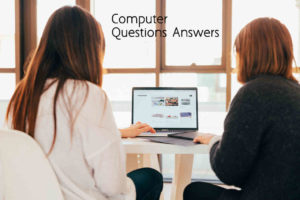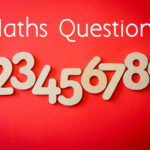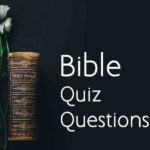100 Computer Questions Answers – Basic Computer Knowledge

Online Computer Basic Knowledge Questions and Answers Part 1 (1-25)
1) What is wallpaper on a computer?
Answer: The artwork that forms the background for a windows screen is called wallpaper, which comes from a graphic file we can supply.
2) What is Microsoft’s first product?
Answer: A BASIC interpreter for the Intel 8080.
3) In windows 98 web view we can select items by pointing to them with mouse and open window by:
Answer: Click once to it.
4) What are the different types of Printers?
Answer: Daisy -wheel printer, dot-matrix printer, impact printer, ink jet printer, laser printer, and line printer.
5) Windows 98’s which button allows us to minimize all open windows with a single taskbar click?
Answer: Show Desktop.
6) Windows 3 was released in which year?
Answer: May 1990.
7) In Windows we can maintain multiple E-mail and newsgroup accounts in:
Answer: Outlook Express.
8) To move a program or operating system from one hardware platform to another is:
Answer: PORT.
9) To create our own web page, we can use what, which is another tool included with Windows 98
Answer: Frontpage Express.
10) Microsoft also markets a wide range of application programs. Which are they?
Answer: Microsoft Word – a word processor; Microsoft Excel – a spreadsheet.
11) Windows 98 supports what term that describes an automatic installation of new hardware we add to our RC?
Answer: Plug and Play.
12) A computer which is smaller than a laptop and about the size of a textbook is:
Answer: Notebook computer.
13) With what feature we can add up to 8 monitors on a single Windows 98 computer?
Answer: Multiple Monitor Support.
14) What are the three main components of windows?
Answer: Program manager, Print manager and File manager.
15) For years sounds cards created musical sounds by using a simple technology called:
Answer: FM synthesis.
16) Language processing means:
Answer: Analysis of source program + Synthesis of the target program.
17) The heart of the FM chip is:
Answer: It has three operators. 1. Oscillator, 2. Envelope generator, 3. Level controller.
18) A small input device with one or more buttons used as for painting or drawing is:
Answer: Mouse.
19) CNC stands for:
Answer: Computer Numerical Control.
20) Language processor consists of two phases. What are they?
Answer: Analysis phase and Synthesis phase.
21) What is NC (Numerical Control)?
Answer: NC is a form of programmable automation in which the process is controlled by Numbers, letters and symbols. (In NC the numbers form a program of instructions designed for a particular workpart or job, which are changed according to the job changes).
22) Write examples for the operating system:
Answer: DOS, OS/2, UNIX, WINDOWS etc.
23) What are the 3 basic components of an NC system?
Answer: Program of instructions, controller unit also called Machine Control Unit (MCU), machine tool or other controlled process.
24) The process of recognizing the lexical components in a source string is called:
Answer: Scanning.
25) What is CNC?
Answer: Computer Numerical Control is an NC system that utilises a dedicated, stored program computer to perform some or all of the basic Numerical Control functions.
Online Computer Questions Answers – Basic Computer Knowledge Part 2 (Questions 26-50)
26) The simultaneous execution of two or more programs in one computer is called:
Answer: Multi-tasking.
27) In NC the program of instruction consists of:
Answer: The detailed step-by-step set of directions to the machine tool.
28) AST stands for:
Answer: Abstract Syntax Tree.
29) What is the function of the controller unit?
Answer: The controller unit consists of the electronics and hardware that read and interpret the program of instructions and converts it into mechanical actions of the machine tool.
30) A computer system that supports more than one simultaneous user is known as:
Answer: Multi-user.
31) In CNC the controller unit is:
Answer: A microcomputer or minicomputer.
32) There are two fundamental approaches to parsing. What are they?
Answer: Top-down parsing and bottom-up parsing.
33) What is the difference between NC and CNC?
Answer: In CNC, in place of the hardwired controller unit of NC we use a microcomputer or minicomputer.
34) Example for a multiuser operating system is:
Answer: UNIX.
35) What are the parts of a controller unit in NC?
Answer: A tape reader, a data buffer, signal output channel to the machine tool, feedback channels from the machine tool and other sequence controls to coordinate the operation of the above-mentioned parts.
36) Many languages provide built-in facilities for writing macros. Well known examples for these are high-level languages:
Answer: PL/I, C, Ada, C++ etc.
37) Into which form the controller unit converts the instructions?
Answer: The MCU converts the instructions to electronic pulses of current which the machines motors and controls follow to carry out the various machining operations.
38) Examples for single user operating systems?
Answer: DOS, OS/2 and Windows 3.1.
39) What is meant by a part program?
Answer: In an NC system, the numerical data which is required for producing a part is known as part program (It is arranged in blocks of information each contain the numerical data required to produce one segment of the workpiece).
40) A macro call leads to:
Answer: Macro expansion.
41) What is APT?
Answer: APT is a part programming language which stands for Automatically programmed tools.
42) Prolog is high-level programing language its expansion is:
Answer: PROgramming LOGic.
43) Mention any 5 application of NC?
Answer: 1. Metal machining like Milling, Boring, Drilling, etc., 2. Cloth cutting, 3. Assembly machines, 4. Laser beam process, 5. Plasma Arc cutting.
44) MDT stands for:
Answer: Macro Definition Table.
45) List any two examples of EXPERT system?
Answer: MYCIN, PROSPECTOR.
46) What is PROLOG’S application?
Answer: It is widely used in Artificial Intelligence application.
47) List any two examples of Natural Language systems?
Answer: LUNAR system, LIFER system.
48) SST stands for:
Answer: Sequencing Symbol Table.
49) A function that maps from problem state descriptions to measures of desirability which is usually represented as numbers:
Answer: Heuristic function.
50) POSIX stands for:
Answer: Portable Operating System Interface.
Computer Questions Answers – Basic Computer Knowledge Part 3 (51-75)
51) The whole problem of representing the facts that change as well as those that do not is known as the:
Answer: Frame Problem.
52) APT stands for:
Answer: Actual Parameter Table.
53) Best-First-Search is a way of combining the advantages of both:
Answer: Depth-first and breadth-first search into a single method.
54) When 64-bit chip was introduced?
Answer: In 1993 by Intel.
55) A list of tasks a system could perform is known as:
Answer: Agenda.
56) In the compiler, which analyzer converts the source program into a sequence of atomic units called tokens?
Answer: Lexical Analyzer.
57) Name the search procedure that operates in a space of constraint sets:
Answer: Constraint Satisfaction.
58) PCM stands for:
Answer: Pulse Code Modulation.
59) The kind of backward chaining in which operates are selected and then subgoals are set up to establish the preconditions of the operators is called:
Answer: Operator subgoaling.
60) Identifiers, keywords, constants, operators and punctuation symbols such as commas and parentheses are typical:
Answer: Tokens.
61) The minimax search procedure is a:
Answer: Depth-first, depth-limited search procedure.
62) A security method that identifies a specific authorized user of a computer system, by a unique string of character that user types as an identification code is:
Answer: Password.
63) In predicate logic, we can represent real-world facts as statements written as:
Answer: Well-formed formula.
64) A secondary processor used to speed up operations by taking over a specific part of the main processor’s work is called:
Answer: Coprocessor.
65) What is resolution?
Answer: Resolution is a proof procedure that reduces some of the complexity because it operates on statements, which have been converted to a single canonical form.
66) PASCAL was developed by:
Answer: Niklaus Wirth.
67) A declarative representation is one in which knowledge is specified, but the use to which that knowledge is:
Answer: To be put is not given.
68) The name of the device used for a user to computer communications, usually the display and the keyboard is called:
Answer: Console.
69) A procedural representation is one in which the control information that is necessary to use the knowledge is considered to be:
Answer: Embedded in the knowledge itself.
70) An extra or redundant bit used to detect transmission errors is called:
Answer: Parity bit.
71) Programming language paradigm in which logical assertions are viewed as programs?
Answer: Logic programming.
72) What is CON?
Answer: It is an abbreviation for the console.
73) What is Horn Clause?
Answer: Horn clause is a clause that has almost one positive literal.
74) What is the need of parallel processing in a computer?
Answer: Achieve high performance at lower cost.
75) In PROLOG the rules are restricted to:
Answer: Horn clause.
Top Computer Questions and Answers – Basic Computer Knowledge Part 4 (51-75)
76) CAE stands for:
Answer: Computer Aided Engineering.
77) If the new facts are consistent with all the other facts that have already been asserted, then nothing will be retracted from the set of facts that are known to be true. What is this property called?
Answer: Monotonicity.
78) What is an efficient form of information processing which emphasizes the exploitation of concurrent events in a computer?
Answer: Parallel Processing.
79) Any inference that depends on the lack of some piece of knowledge is known as:
Answer: Non-monotonic inference.
80) CADD stands for:
Answer: Computer Aided Drafting and Design.
81) What is CWA?
Answer: Closed World Assumption is a kind of minimalist reasoning.
82) Computers can be made very knowledgeable but are far from being:
Answer: Intelligent.
83) What is TMS?
Answer: Truth Maintenance System.
84) A program that translates a high-level programming language such as C or Pascal into a machine language program is called:
Answer: Compiler.
85) The means is providing the ability to do dependency-directed backtracking and thus to support Non-monotonic reasoning is:
Answer: Truth Maintenance System.
86) Systems with a single central processor is known as:
Answer: Uniprocessor system.
87) What is LTMS?
Answer: Logic-based Truth Maintenance System.
88) A processor that can recognize and execute well over 100 different assembly language instruction is:
Answer: CISC Complex Instruction Set Computing.
89) What is ATMS?
Answer: Assumption-based Truth Maintenance System.
90) The computer with multiple processors with shared memory space is known as:
Answer: Multiprocessor system.
91) A measure of the extent to which the evidence that is described by the antecedent of the rule supports the conclusion that is given in the rule’s consequent:
Answer: Certainty factor.
92) RISC processors are 70 percent faster than which processors?
Answer: CISC.
93) What measures the strength of evidence in favour of a set of propositions in Dempster–Shafer theory?
Answer: Belief (Bel).
94) In uniprocessor systems which channels are used to provide direct information transfer between the device and main memory?
Answer: D.M.A. (Direct Memory Access)
95) What is Prospector?
Answer: Mineral exploration and identification tool.
96) Novell Netware’s local area network protocol used to route messages from one network node to another is called:
Answer: IPX Internet Packet Exchange.
97) What is the process of acquiring domain-specific knowledge and building it into the knowledge base?
Answer: Knowledge Engineering.
98) In the uniprocessor system, usually CPU is:
Answer: 1000 times faster than memory access.
99) The process of mapping ordinary messages into encoded messages is called:
Answer: Enciphering.
100) Examples for interpreted languages are:
Answer: LISP and APL BASIC was an interpreted language.
Read more > Quiz Questions and Answers

